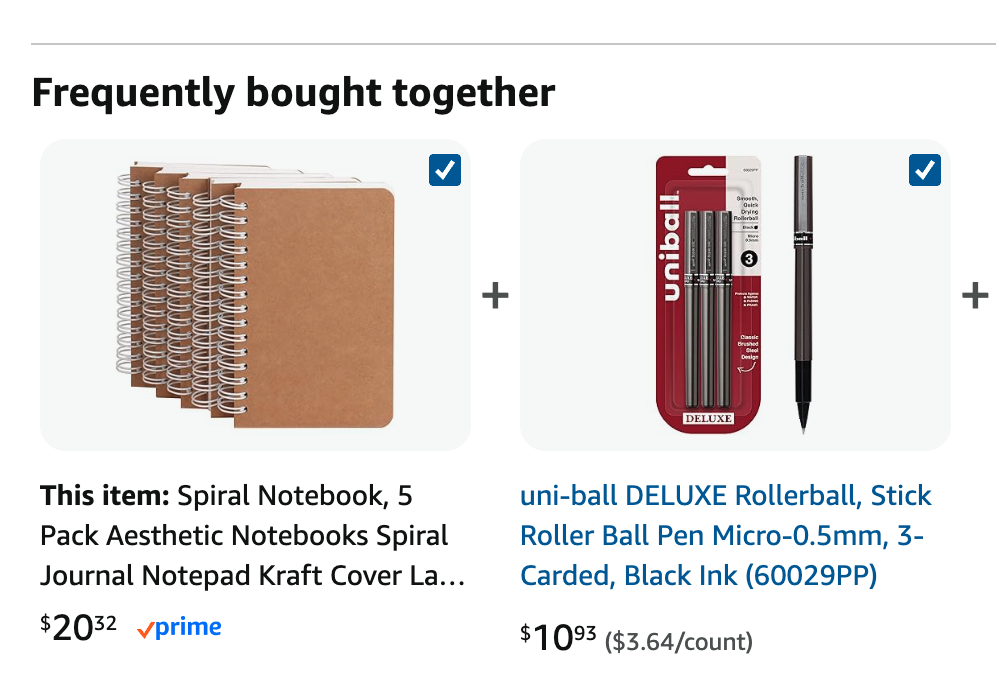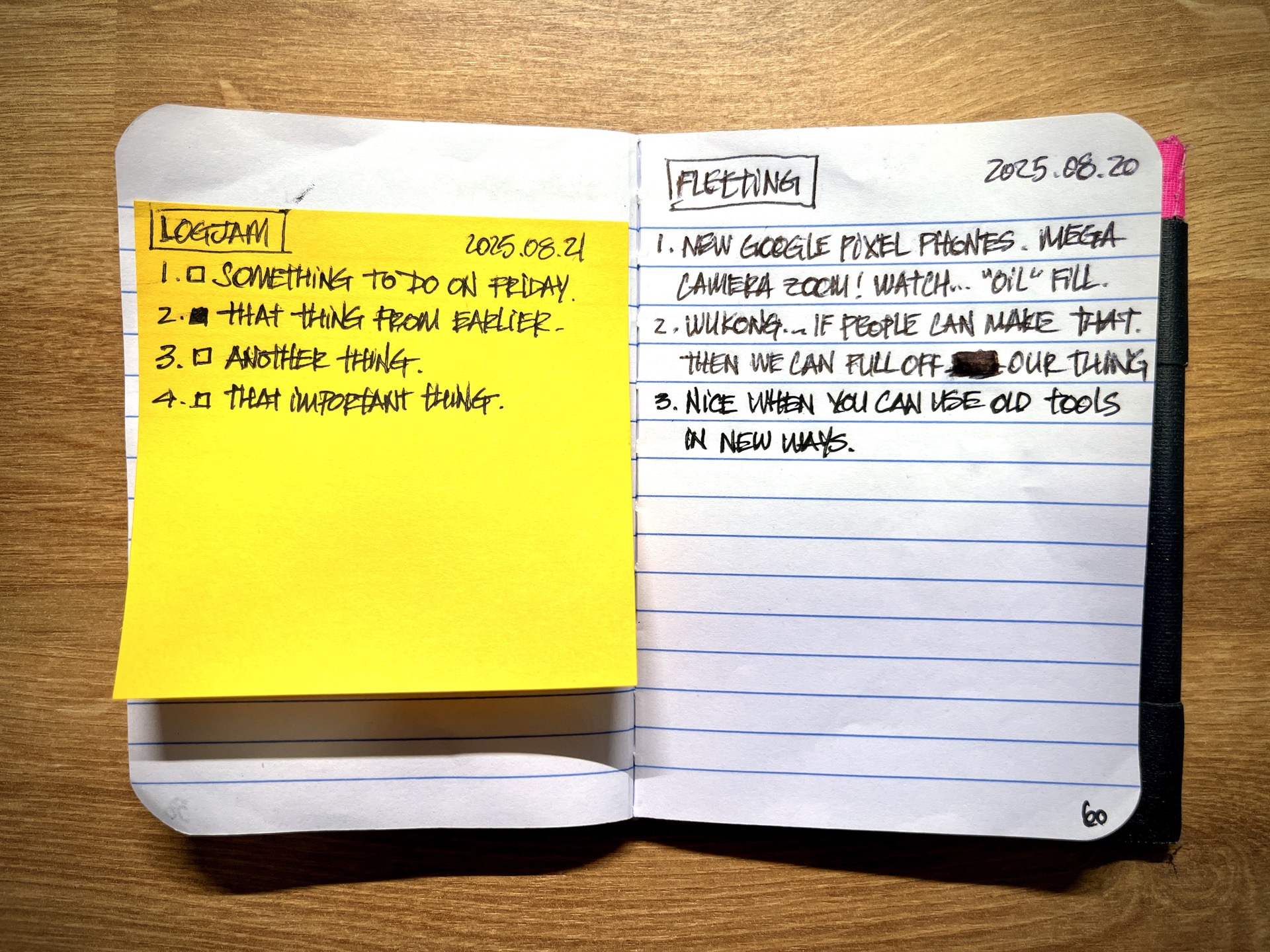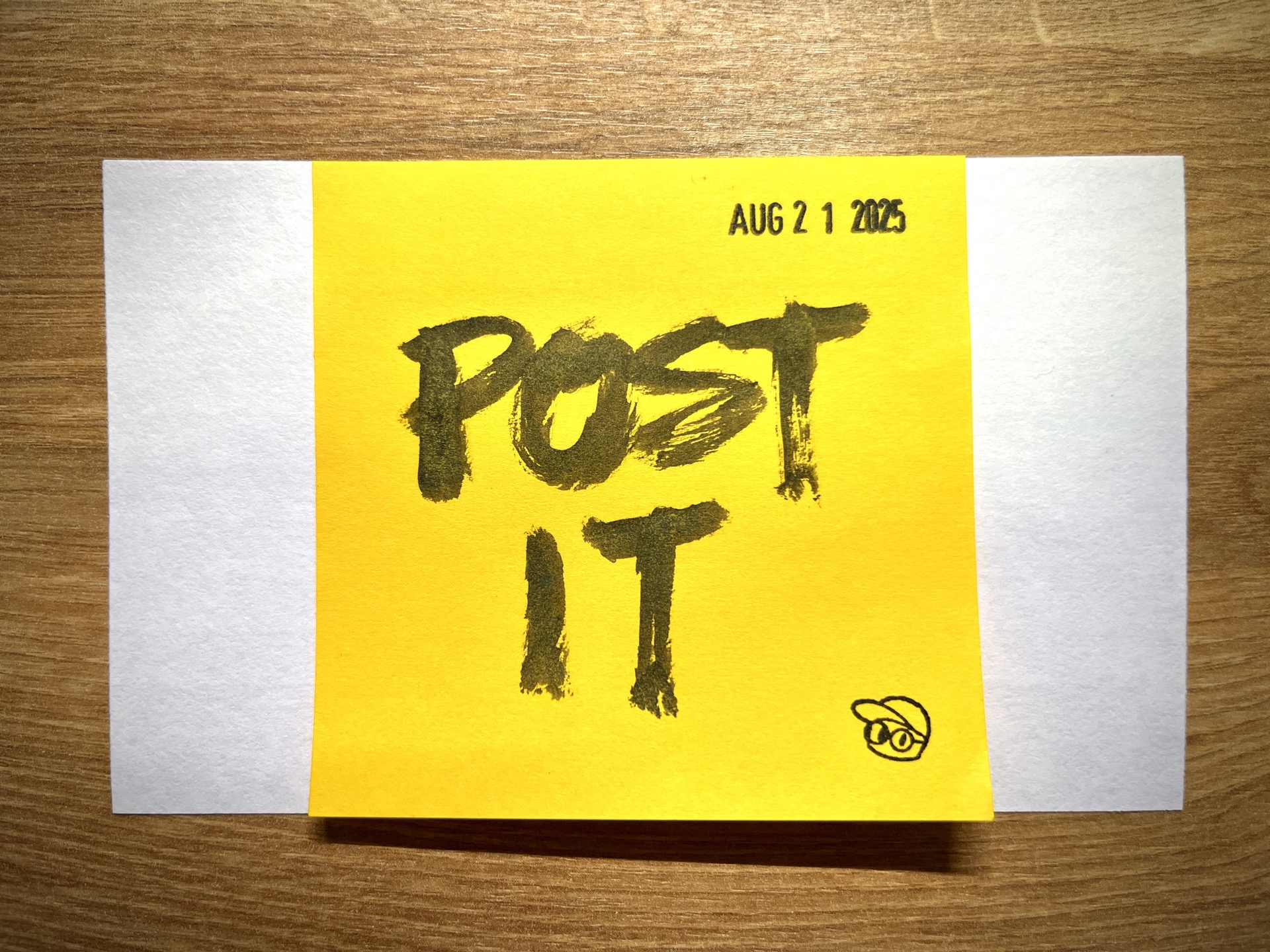There’s been a slight change in my EDC stationery.
These shifts happen from time to time—a build-up of tiny micro-inconveniences in the current system, paired with the itch of curiosity to try something different. Not necessarily new. Just different.
This time, the culprit is the humble 3x3 Post-it note.
But it didn’t start there.
Lineage
Whenever you change your setup—whether it’s a desk, a tool, or even a morning routine—you can usually trace it back to something. There’s a lineage. A messy genealogy of tweaks, influences, frustrations, and inspirations that stack until one day something clicks.
In this case, I know the exact lineage that brought me back to this old, familiar 3x3 sheet of paper—and into using it in new, unexpected ways. Not just the classic “don’t forget” note slapped on a fridge or wall, that tiny golden square of paper standing guard as the last line of defense.
I can trace it back recently to Remember, when I was archiving a stack of 3x5 index cards into my digital notes. Those cards weren’t just notes. They were my daily companions, carried around for months, crammed with scribbles.
That’s when I realized what modularity could do. One card at a time, shuffled, clipped, rearranged. Notes that could be spread across a desk, stacked in piles, re-ordered until something new emerged.
And I can trace that insight back further still—to an interview where OpenAI’s Sam Altman explained how he tore pages out of his pocket notebook, just so he could spread them out to scan through ideas—creating a canvas of ripped out pocket note papers. The pages weren’t sacred. They were pieces in play.
---
Sidenote: Yes, I did hunt down the exact notebook and pen combo. Yes, I blame Sam Altman for being an accidental stationery influencer.
And I don't think I was the only one hunting! I don't think it's a coincidence that Amazon lists this particular notebook with the particular pen that Sam recommended.

Back to the post.
---
Modularity
For a long time, I leaned hard into modularity. Index cards. Binder clips. Shuffle, sort, spread, repeat.
But as my digital writing and journaling grew—new in form, familiar in habit—I started craving the feel of a bound notebook again. That cheap, off-the-shelf, slip-it-in-your-pocket kind of setup.
But I couldn’t unlearn what modularity gave me. Once you’ve tasted the freedom to reshuffle, remove, and remix, a fixed spine feels like a cage. And now I knew: modularity wasn’t just a preference. It was a need.
Details
Tracing the lineage even further back: about four years ago, Van Neistat posted a video on why details matter so much to him (still one of my favorites).
In it, he spends a full 35 seconds just on Post-it notes. The exact color. The stickiness type. Even how that stickiness is arranged.
What stood out wasn’t just the obsession—it was the layering. Van stacking Post-its on a sheet of cardstock, building a kind of multi-dimensional, modular writing surface. A flat tool turned into something with depth.
Remix
So here’s my remix:
A cheap mini composition notebook (3 for ~$1 at Walmart (US)—can’t get these in Canada). I write my daily to-do list on the right side of the notebook. On the left, a running backlog—weekly tasks, or the “at some point” stuff—captured on a 3x3 Super Sticky Post-it.
Here’s the breakthrough, if you can call it that: when I turn the page, the Post-it comes with me. Peel, stick, repeat. One list becomes many. One square becomes a set of little yellow travel companions, moving along as I work through the notebook.

In their own quiet way, they solve the problem. Filling the modularity gap I first discovered with 3x5 index cards—except now, tucked neatly into a bound pocket-sized book. A movable sheet inside a fixed spine.
It’s simple. Almost too simple. But it works!
A subtle reminder that creativity isn’t about new toys. It’s about tilting old ones. Remixing what’s already in your hands.
Refine
How long will this last? Who knows. Most setups don’t survive contact with real life.
But here’s the point: refining your setup isn’t about chasing the perfect tool. It’s about noticing the friction. Following the lineage. Remixing old influences into new contexts.
Sometimes the breakthrough isn’t new tech or a fancy app. Sometimes it’s a 3x3 yellow square—reimagined.
And above all: it doesn’t matter what you write with, or on. The important thing is that you write it down.
